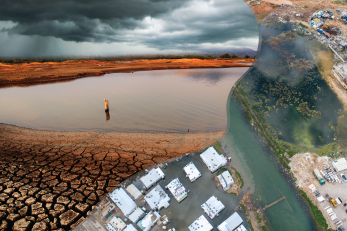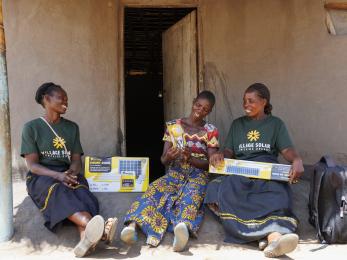Middle East Anticipatory Climate Action Model: Conceptual Overview

Anticipatory action (AA), i.e. acting ahead of predicted hazardous events to prevent or reduce acute humanitarian impacts, is gaining traction in the Middle East and North Africa region (MENA). Early Warning System(s) (EWS), which use forecasts for different hazards (including floods and drought) to identify areas of specific vulnerability and trigger predefined communication and preparedness actions, are the cornerstone of AA programmes. Though Gulf states provide real-time observation of meteorological conditions and hazards; however, at present, there does not appear to be a single public platform that provides tailored near real-time hazard predictions and estimates on the number of people exposed to a given hazard in Iraq, Syria, or Yemen.
To address this information delivery gap, Mercy Corps has developed the Middle East Anticipatory Climate Action Model (MEACAM), a publicly available online platform that uses satellite imagery to provide near real-time flash flooding and agricultural drought predictions for Iraq, Syria, and Yemen. The MEACAM also provides estimates on human exposure to the forecasted flooding or drought, including the number of affected internally displaced persons (IDPs) and IDP camps. The platform’s initial design emphasises interpretability for a general audience while not omitting key exposure information, though user feedback from other actors will be welcomed and incorporated. Furthermore, the platform’s back-end infrastructure facilitates the incorporation of additional attribute layers from Mercy Corps’ Crisis Analysis Teams (CAT) and other humanitarian, development, or government agencies.
This focus of the report is threefold:
- An overview and human impact of flooding and drought on Iraq, Syria, and Yemen;
- Identification of opportunities for enhancing data-driven EWS in Iraq, Syria, and Yemen;
- A technical specification of the MEACAM’s flooding and drought prediction models.
The research found that the MEACAM indeed fits within the current early warning space in these three countries; however, a greater potential can be achieved by coordinating with upcoming EWS/AA initiatives and collaborating with information management actors to enrich, optimise, and operationalise a multi-hazard EWS in Iraq, Syria, and Yemen.


